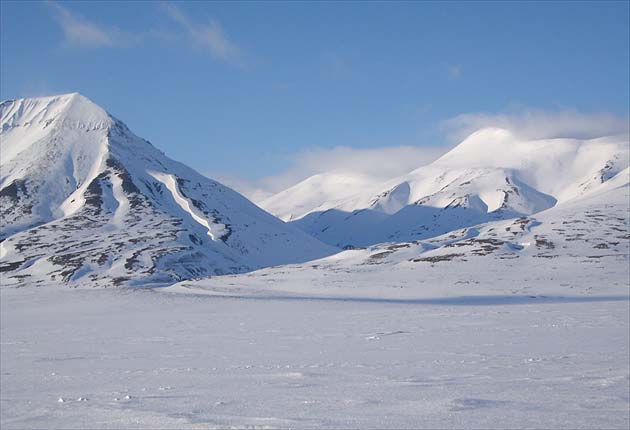
Forget terror in the Middle East. As all of the victims of terror know "there is no terrorist threat"... except from Mother Nature: Exclusive: The methane time bomb.
The first evidence that millions of tons of a greenhouse gas 20 times more potent than carbon dioxide is being released into the atmosphere from beneath the Arctic seabed has been discovered by scientists. ...And wouldn't you know? All the methane comes from the millions of tons of dinosaurs and vegetation which dominate the Arctic ice caps: Steve Connor: The ultimate gas leak that scientists have long dreaded.
In the past few days, the researchers have seen areas of sea foaming with gas bubbling up through "methane chimneys" rising from the sea floor. ...
"We had a hectic finishing of the sampling programme yesterday and this past night," said Dr Gustafsson. "An extensive area of intense methane release was found. At earlier sites we had found elevated levels of dissolved methane. Yesterday, for the first time, we documented a field where the release was so intense that the methane did not have time to dissolve into the seawater but was rising as methane bubbles to the sea surface. These 'methane chimneys' were documented on echo sounder and with seismic [instruments]."
At some locations, methane concentrations reached 100 times background levels. These anomalies have been seen in the East Siberian Sea and the Laptev Sea, covering several tens of thousands of square kilometres, amounting to millions of tons of methane, said Dr Gustafsson. "This may be of the same magnitude as presently estimated from the global ocean," he said. "Nobody knows how many more such areas exist on the extensive East Siberian continental shelves.
Methane is produced naturally by the decay of water-logged vegetation. Over thousands of years it has accumulated under the ground at northern latitudes and has effectively been taken out of circulation by the permafrost acting as an impermeable lid.Apparently the millions of tons of vegetation migrated to the North Pole to die. Curiously, however, they avoided decaying in the Southern latitudes which makes sense if you think about it. Why would vegetation want to die in the Southern latitudes? The Arctic climate is so much more hospitable for millions of tons of vegetation.














1 comment:
NEW EXPLORATION BRINGS NEW OBSERVATIONS
The scientific exploration of the seafloor is relatively new. Frankly, scientific monitoring in both the arctic and antarctic is relatively new.
15 years of records is nothing in the geologic scheme of things.
So, there is no baseline or historical record to judge and compare the new observations by.
Methane releases could have been going on for thousands of years, if not millions of years.
We just don't know.
And if methane releases have been going on for thousands if not millions of years, doesn't that suggest that methane production is an ongoing geolological phenomenon?
So if it's a long term, ongoing process, doesn't that sugggest it could be an Abiotic process?
Why?
Because methane from "vegetation" would have been dissipated long ago.
The article offers the hypothesis that temperature is going up on the seabed, which allows the methane to escape, but offers no scientific evidence -- zero -- to confirm this hypothesis: Such as temperature readings on the seafloor over time.
The Abiotic concept or analysis has been applied to various hydrocarbon seeps or releases by Abiotic proponents for a long time, but "fossil" theory proponents can't bring themselves to consider that possibility.
It's hard to imagine that vegetation "stored" all that time would "all of a sudden" start releasing methane.
And if it's an Abiotic ongoing process, wouldn't that suggest the Earth is acclimatized to this process?
This is the danger of "fossil" theory; scientists misread "processes" and, therefore, misunderstand the significance of those "processes."
The scientists in the article attribute the methane releases to "Global Warming," but the methane is emanating from "methane chimneys," distinct point sources. Wouldn't methane from dispersed organic detritus "bubble up" in a dispersed fashion, as opposed to point sources?
These are all reasonable questions, but because so much of the scientific community is wedded to a "fossil" theory prospective regarding hydrocarbon production on Earth, these questions are never satifactorily answered.
But the questions must be answered before anybody runs around "like a chicken with its head cut off."
Post a Comment